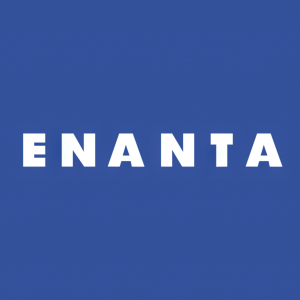Enanta Pharmaceuticals Provides Update on NASH FXR Agonist Programs
Enanta Pharmaceuticals (NASDAQ: ENTA) announced the selection of EDP-305 1.0 mg as the optimal dose after an interim analysis of the ARGON-2 Phase 2b study. The company will discontinue this trial evaluating EDP-305 as a monotherapy in favor of pursuing combination therapies for non-alcoholic steatohepatitis (NASH) through an out-licensing strategy. Data from EDP-297 indicated it is not substantially differentiated from EDP-305. Enanta aims to redirect resources toward developing treatments for hepatitis B and respiratory diseases.
- EDP-305 1.0 mg dose selected as optimal based on patient data.
- Company will focus on combination therapies for better NASH treatment outcomes.
- Significant patient data available from trials enhances future licensing opportunities.
- Discontinuation of the ARGON-2 trial may signal challenges in achieving robust monotherapy results.
- EDP-297 not substantially differentiated from EDP-305 raises concerns about product competitiveness.
Insights
Analyzing...
– EDP-305 1.0 mg Selected as Optimal Dose Following ARGON-2 Interim Analysis –
– EDP-297 Not Substantially Differentiated from EDP-305 Based on Recent Phase 1 Results –
– Company to Discontinue ARGON-2 Trial Evaluating EDP-305 as a Monotherapy and Prioritize Combination Approaches for FXR Agonists Through Out-Licensing Strategy –
“Looking at a broad range of doses in NASH patients, our interim analysis of EDP-305 in ARGON-2, in comparison to clinical data from ARGON-1, indicates that the 1.0 mg dose of EDP-305 provides the best balance of efficacy and tolerability,” said
EDP-305 Clinical Update
ARGON-2 is a Phase 2b randomized, double-blind, placebo-controlled, multicenter study evaluating safety and efficacy of 1.5 mg and 2.0 mg of EDP-305 in patients with liver biopsy proven NASH. The primary outcome at 72-weeks is the proportion of subjects who achieve ≥1 stage improvement in fibrosis without worsening of steatohepatitis and/or resolution of steatohepatitis and no worsening of liver fibrosis as determined by liver biopsy. Results from a planned internal interim analysis on a subset of patients at 12 weeks, as well as review of clinical data from all tested doses of EDP-305 demonstrated that the 1.0 mg dose of EDP-305 provides the best balance of efficacy and tolerability.
ARGON-1 was a 12-week Phase 2a randomized, double-blind, placebo-controlled study evaluating the safety, tolerability, pharmacokinetics and efficacy of 1.0 mg and 2.5 mg doses of EDP-305 in a NASH population. The primary objectives of the study were to evaluate change in ALT levels at week 12 and to evaluate the safety and tolerability of EDP-305. Key secondary objectives included change in liver fat content by MRI-PDFF, change in lipids, and pharmacokinetics and pharmacodynamic parameters, including C4 and FGF19.
In ARGON-1, EDP-305 1.0 mg dose resulted in good target engagement as measured by reduction in levels of C4, GGT and ALT after 12 weeks of treatment. Overall, EDP-305 was generally safe, with the majority of treatment-emergent adverse events being mild to moderate. The incidence of treatment discontinuation due to pruritus was
EDP-297 Clinical Update
EDP-297, Enanta’s second FXR agonist designed for greater potency and tissue targeting, was evaluated in a Phase 1 randomized, double-blind, placebo-controlled study which assessed the safety, tolerability and pharmacokinetics of orally administered single (20-600 microgram) and multiple doses (5-90 microgram) of EDP-297 in healthy adult subjects. The first phase assessed single ascending doses of EDP-297 or placebo in healthy subjects. A "fasted" and "fed" two-part cohort also assessed food effect. The second phase assessed multiple ascending doses of EDP-297 or placebo for 14-days in healthy subjects. Each cohort within each phase enrolled a total of eight subjects who were randomized to receive EDP-297 or placebo. The cohort assessing food effect enrolled 10 subjects randomized to receive EDP-297 or placebo. While strong target engagement was observed at lower doses of EDP-297, the overall balance of activity and tolerability was comparable to that of EDP-305. Data from this study will be submitted for presentation at a future medical conference.
About NASH and FXR Agonists
NASH is a serious form of non-alcoholic fatty liver disease (NAFLD) which is common in
About Enanta
Enanta is using its robust, chemistry-driven approach and drug discovery capabilities to become a leader in the discovery and development of small molecule drugs for the treatment of viral infections and liver diseases. Enanta’s research and development efforts have produced clinical candidates for the following disease targets: respiratory syncytial virus (RSV), hepatitis B virus (HBV), SARS-CoV-2 (COVID-19), and non-alcoholic steatohepatitis (NASH). Enanta is also conducting research in human metapneumovirus (hMPV).
Enanta’s research and development activities are funded by royalties from hepatitis C virus (HCV) products developed under its collaboration with AbbVie. Glecaprevir, a protease inhibitor discovered by Enanta, is sold by AbbVie in numerous countries as part of its leading treatment for chronic HCV infection under the tradenames MAVYRET® (
Forward Looking Statements Disclaimer
This press release contains forward-looking statements, including statements with respect to the prospects for out-licensing Enanta’s FXR agonists. Statements that are not historical facts, are based on management’s current expectations, estimates, forecasts and projections about Enanta’s business and the industry in which it operates and management’s beliefs and assumptions. The statements contained in this release are not guarantees of future performance and involve certain risks, uncertainties and assumptions, which are difficult to predict. Therefore, actual outcomes and results may differ materially from what is expressed in such forward-looking statements. Important factors and risks that may affect actual results include:; the impact of development, regulatory and marketing efforts of others with respect to competitive treatments for NASH; the uncertainty of being able to achieve any out-licensing transaction for an Enanta’s FXR agonist on favorable terms, if at all ; Enanta’s need to obtain and maintain patent protection for its product candidates and avoid potential infringement of the intellectual property rights of others; and other risk factors described or referred to in “Risk Factors” in Enanta’s most recent Form 10-Q for the quarter ended
View source version on businesswire.com: https://www.businesswire.com/news/home/20211004005192/en/
Media and Investor Contact
617-744-3848
jviera@enanta.com
Source:







